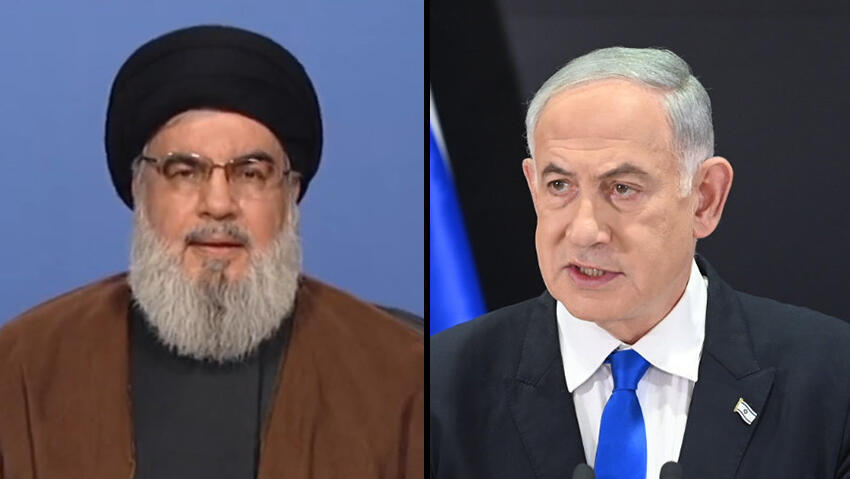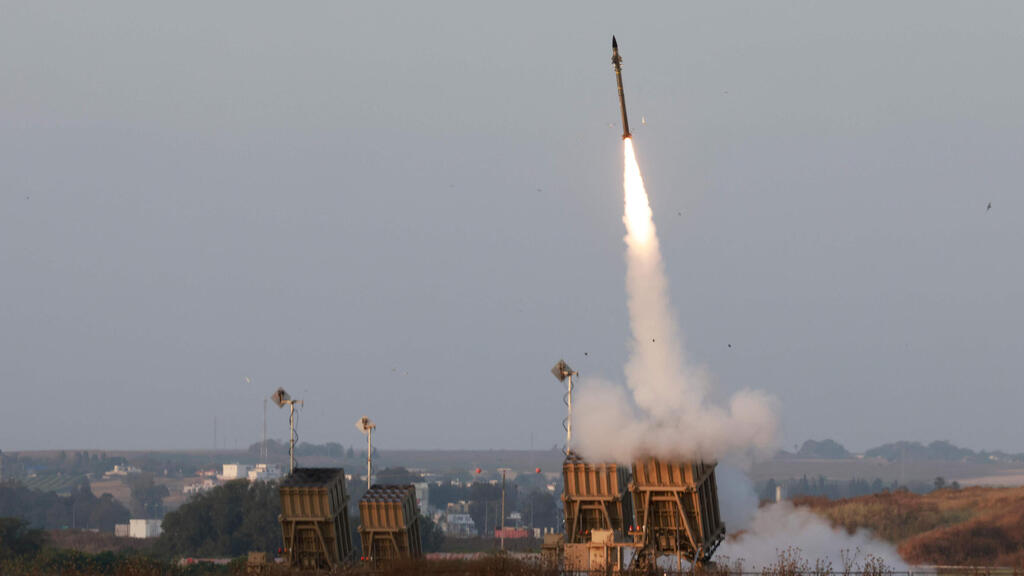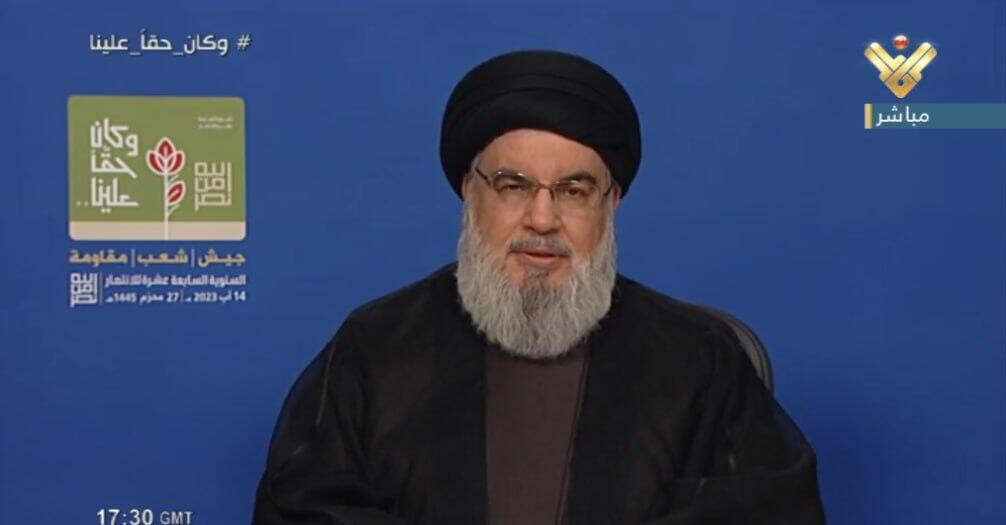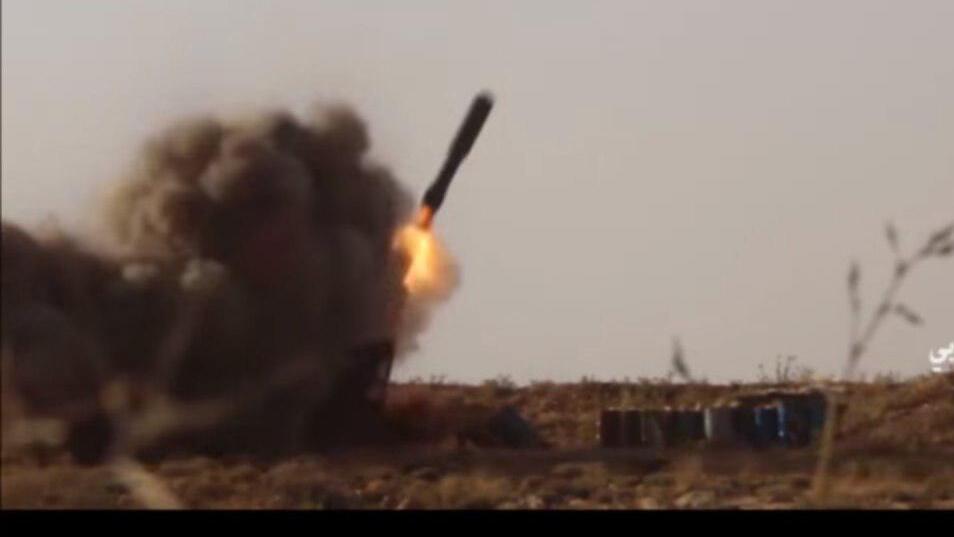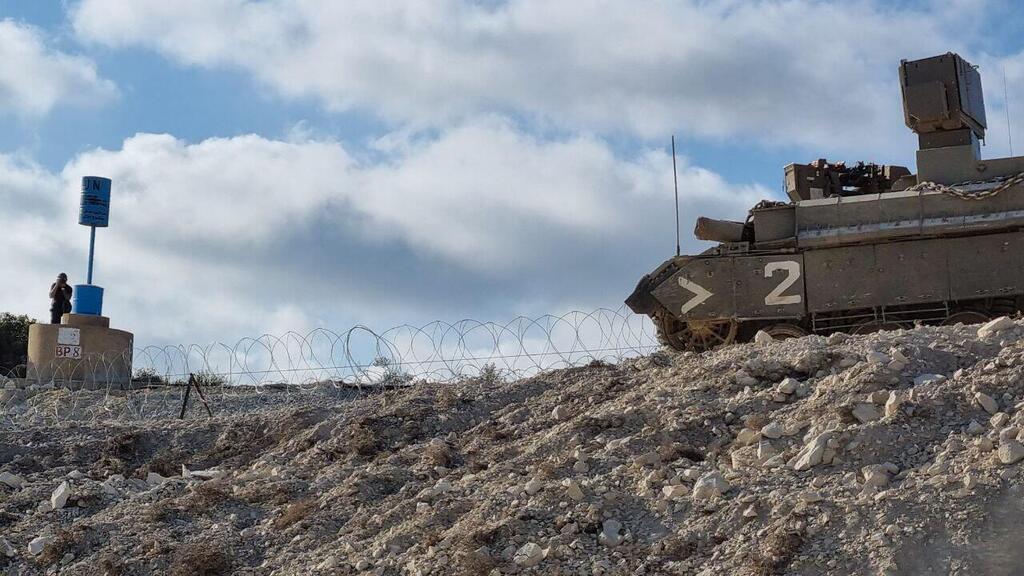Getting your Trinity Audio player ready...
The current relations between Israel and Hezbollah have increasingly assumed the rudiments of a localized version of the central strategic balance governing the conflict between the U.S. and the Soviet Union/Russia.
More stories:
Termed MAD, for Mutual Assured Destruction, the balance reflects a dreadful deterrence relationship between the superpowers based on the certainty that even if one side launched a surprise attack, sufficient numbers of deliverable long-range strategic weapons would survive in the hands of the defender to retaliate and destroy the attacker.
Any doubts that this is the reality within which Israel operates nowadays should be put to rest in the wake of the warnings issued recently by Defense Minister Yoav Gallant and Hezbollah chief Hassan Nasrallah. Each one in his turn threatened to relegate the other’s country to the Stone Age if attacked.
In the case of the superpowers, the assurance of destruction resulted from the fact that neither side could guarantee that a preemptive strike would take out the enemy’s ability to retaliate. Any residual forces left intact would still cause total devastation.
The localized version, however, is different in two respects. First, while the superpowers' strategic balance was based on the ability to deliver nuclear weapons the regional version is thankfully rooted in conventional arms. (Nevertheless, given the vast rocket arsenal in Hezbollah’s hands, most of which are of low accuracy, Israeli cities will likely be the preferred target and could withstand extensive damage.)
Additionally, unlike the superpowers Israel is equipped with an elaborate multi-layered missile defense system. It has proved its mettle repeatedly in battle and is constantly augmented and upgraded.
Thus, Iran and Hezbollah need to satisfy themselves that if the Israeli Defense Forces (IDF) launch a devastating preemptive attack enough precision-guided rockets and other armaments will not only survive but be able to penetrate the Israeli defenses so as to inflict unacceptable damage inside Israel.
Or, at least, that Israeli planners remained uncertain that the country’s defenses can indeed neutralize the remaining Hezbollah deliverable munitions and prevent any widespread destruction even after an IDF crippling first strike.
In the MAD parlance the surviving Hezbollah forces would act as a “second-strike capability” aimed to overwhelm Israel’s defenses, wreak havoc, and consequently dissuade Israel from attempting a one-two punch strategy.
Obviously, unless Hezbollah is armed with “smart” rockets—i.e. capable of maneuvering to evade Israeli missile defenses— it must field massive numbers of such weapons if it hopes to withstand an Israeli first strike and still be able to credibly threaten lethal retaliation.
After all, so far the Gaza terrorist organizations Hamas and the Palestinian Islamic Jihad(PIJ) sought to overcome Israel’s missile defenses simply by firing salvos of hundreds of projectiles at a time hoping to saturate the Iron Dome system’s interception capacity. Similarly, unless Hezbollah has in its possession advanced arms it must still rely on quantity not quality to deter Israel.
measures such as concealment, mobility and deception will continue to play a key role
In turn measures such as concealment, mobility and deception will continue to play a key role in assuring that hundreds, possibly thousands, of long-range weapons outlast an Israeli attack. The local MAD version of “hardening” the missiles’ emplacements—i.e. deploying rockets inside, or in close vicinity to, civilian targets— will also be extensively utilized.
In this respect Hezbollah likely draws confidence from the precedents set by Hamas and the PIJ in Gaza. There too Israel is loath to launching a ground operation fearing high casualties among IDF troops for only passing gains. Consequently, time and again these organizations’ passive defensive measures proved effective as the Israeli Air Force was unable to fully suppress their incessant rocket fire on its own.
The deterrence relationships between Israel and its main enemies Iran and Hezbollah is thus based on more than the exchange of spine-chilling threats between their leaders. Rather, as with the original MAD doctrine, it is the product of a “delicate” balance between the offensive and defensive capabilities at each sides’ disposal.
This equation is constantly changing due to, among other factors, technological advances and the buildup of arsenals. Yet it is this dynamics which has so far prevented a full-scale blowout.
Notwithstanding this reality, it is unclear whether Israeli leaders are ready to acknowledge, at least publicly, the existence of a strategic deadlock with the enemy to the north. For example, Defense Minister Gallant declared on September 11, “Nasrallah has apparently forgotten what the true power relations are between Israel and Hezbollah.”
Similarly, on the Hezbollah side new evidence suggests the organization is prone to dangerous breakdowns in its command and control. Apparently, some of its recent high-risk provocations vis-a-vis Israel were the sole initiative of low-level local commanders.
Such imprudence is reminiscent of the one which also threatened to undo the MAD balance of deterrence between the superpowers. As Michael Dobbs wrote in the New York Times on October 5, 2022 “Contrary to popular belief, the biggest danger of nuclear war in October 1962 [during the Cuban missile crisis] did not arise from the so-called eyeball-to-eyeball confrontation between [Soviet leader Nikita] Khrushchev and [U.S. President John F.] Kennedy but from their inability to control events that they themselves had set in motion.”
Given that Hezbollah is a non-state actor, indeed a terrorist organization, it is by far more difficult to ascertain under which rules it operates
Given that the Middle East is the scene of daily friction and inflammatory rhetorics rational thinking, however it is defined, may be a scarce commodity. Moreover, as Hezbollah is a non-state actor, indeed a terrorist organization, it is by far more difficult to ascertain under which rules it operates.
For example, it is all but certain that Hezbollah estimates it cannot prevent Israel from a devastating retaliation even if it surprises the IDF. Such an outcome could also entail prohibitive political costs for the organization inside Lebanon. Nor is Tehran likely to view it favorably. Hence, Hezbollah should be definitely deterred from attacking Israel.
Yet it is impossible to rule out such a scenario as Nasrallah may calculate that, if the fighting drags out, initiating an offensive on his own would nevertheless compel Hamas and the PIJ to launch attacks from Gaza and the West Bank, possibly draw in Iranian militias in Syria and eventually even Iran itself. He may also expect Israeli Arabs to rise up then.
Israel, therefore, cannot rely on any “stability” which the local MAD balance seemingly provides. Its absolute top priority must be addressing whatever vulnerabilities days of massive cross-border barrages are likely to expose in its active and passive defenses.
Upgrading these defenses would not only provide better protection for the country’s vital strategic sites and the population at large, but is a sine qua non for Israel taking the strategic initiative against the looming Iran-Hezbollah threat. Otherwise the military stalemate imposed by the local MAD balance will continue to enable Iran to pursue its multi-front proxy strategy unhindered.
Dr. Avigdor Haselkorn is a strategic analyst and the author of books, articles, and op-eds on national security issues.


